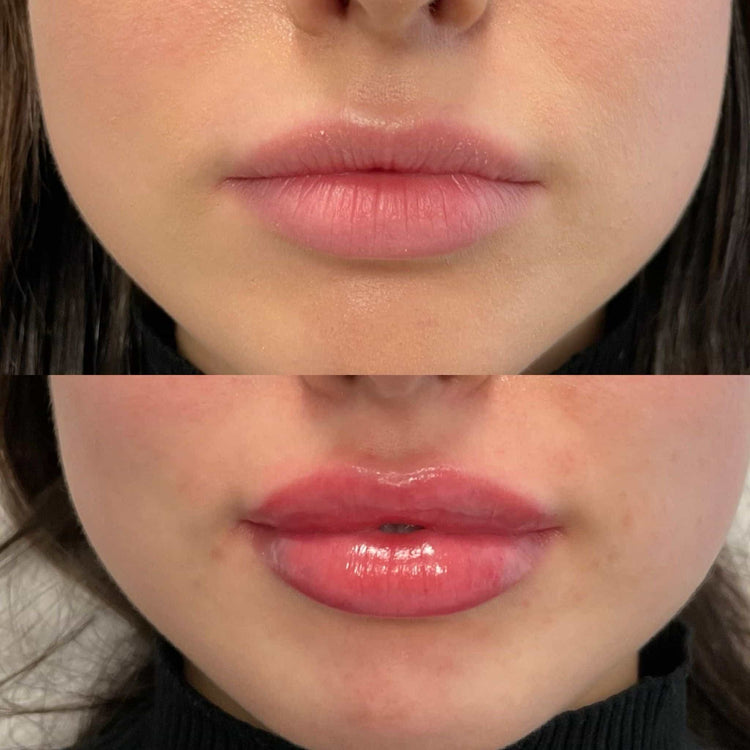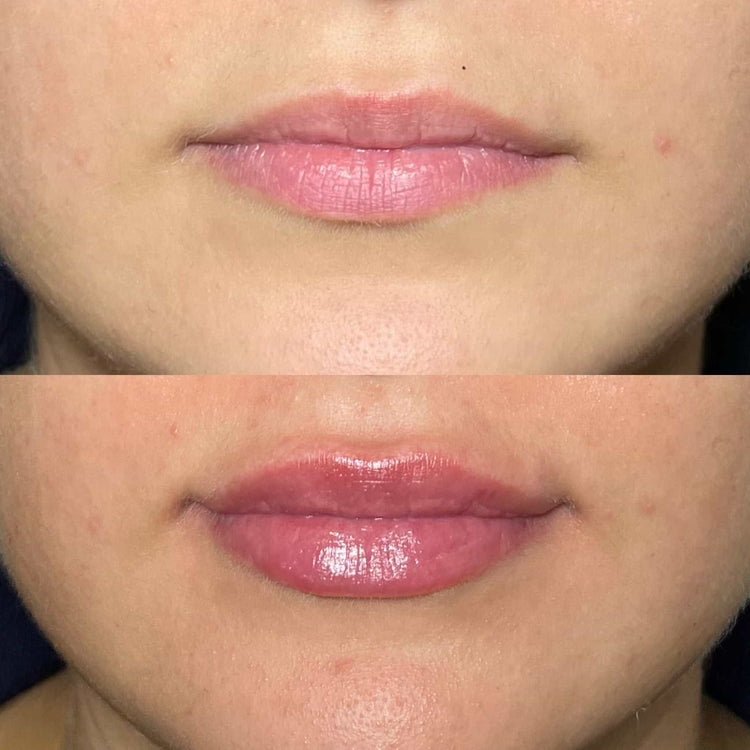Safety and Risks
Dermal fillers have become increasingly popular in recent years, offering a non-surgical way to enhance facial features and smooth wrinkles. However, as with any medical procedure, it’s crucial to understand the potential risks and ensure safety, particularly when considering long-term use.
Allergic Reactions
Dermal fillers are generally considered safe for short-term use when administered by a qualified professional. However, the long-term effects of dermal filler use are still under investigation.
- One potential risk is allergic reactions. Fillers often contain hyaluronic acid, which is a naturally occurring substance in the body. However, some individuals may be sensitive or allergic to certain types of fillers or additives.
- Another concern is the potential for filler migration. This occurs when the filler moves from its intended location, which can cause lumps or distortion.
- Long-term use of dermal fillers may also lead to changes in facial tissue and structure.
- It’s essential to consult with a board-certified dermatologist or plastic surgeon to discuss your individual circumstances, medical history, and potential risks before undergoing any dermal filler treatment.
Infection
Long-term use of dermal fillers carries certain risks that need careful consideration.
While generally safe for short-term applications, extended use can lead to complications.
One risk is the development of granulomas, which are inflammatory reactions to foreign substances within the body. These can appear as lumps or bumps under the skin.
Additionally, repeated injections may cause changes in the texture and elasticity of the skin, potentially leading to a unnatural or stiff appearance over time.
Inflammation
Understanding the risks associated with long-term dermal filler use is crucial for making informed decisions about cosmetic treatments.
Inflammation is a common concern. The body’s immune system may react to the filler material, resulting in redness, swelling, or tenderness at the injection site.
Repeated inflammation can contribute to fibrosis, which is the formation of scar tissue. This can make the skin feel thicker and less pliable.
Furthermore, long-term filler use can lead to changes in facial contours as the filler settles or is absorbed by the body.
Asymmetry or Lumps
Long-term use of dermal fillers carries certain risks that need careful consideration. While generally safe for short-term applications, extended use can lead to complications.
One risk is the development of granulomas, which are inflammatory reactions to foreign substances within the body. These can appear as lumps or bumps under the skin.

Additionally, repeated injections may cause changes in the texture and elasticity of the skin, potentially leading to a unnatural or stiff appearance over time.
Understanding the risks associated with long-term dermal filler use is crucial for making informed decisions about cosmetic treatments.
Inflammation is a common concern. The body’s immune system may react to the filler material, resulting in redness, swelling, or tenderness at the injection site.
Repeated inflammation can contribute to fibrosis, which is the formation of scar tissue. This can make the skin feel thicker and less pliable.
Furthermore, long-term filler use can lead to changes in facial contours as the filler settles or is absorbed by the body.
Vascular Occlusion
Long-term use of dermal fillers carries certain risks that need careful consideration.
While generally safe for short-term applications, extended use can lead to complications.
- One risk is the development of granulomas, which are inflammatory reactions to foreign substances within the body. These can appear as lumps or bumps under the skin.
- Additionally, repeated injections may cause changes in the texture and elasticity of the skin, potentially leading to a unnatural or stiff appearance over time.
Understanding the risks associated with long-term dermal filler use is crucial for making informed decisions about cosmetic treatments.
Inflammation is a common concern. The body’s immune system may react to the filler material, resulting in redness, swelling, or tenderness at the injection site.
Repeated inflammation can contribute to fibrosis, which is the formation of scar tissue. This can make the skin feel thicker and less pliable.
Furthermore, long-term filler use can lead to changes in facial contours as the filler settles or is absorbed by the body.
Long-Term Effects
Long-term use of dermal fillers carries potential risks that warrant careful consideration. While generally considered safe for short-term applications, extended use may lead to complications.
Volume Loss Over Time
Volume loss over time is a common concern with dermal filler use. As the body naturally breaks down the filler material, facial volume gradually decreases.
- This can result in the gradual reappearance of wrinkles and folds that were initially smoothed out by the filler.
- Repeated treatments may be required to maintain desired results, leading to increased costs over time.
Changes in Skin Texture
Long-term use of dermal fillers can lead to changes in skin texture.
Repeated injections can cause the skin to become thicker and less elastic, potentially resulting in a stiff or unnatural appearance.
The skin may also lose its natural ability to retain moisture, leading to dryness and a dull complexion.

Development of Antibodies
Long-term use of dermal fillers carries certain risks that need careful consideration.
While generally safe for short-term applications, extended use can lead to complications.
- One risk is the development of granulomas, which are inflammatory reactions to foreign substances within the body. These can appear as lumps or bumps under the skin.
- Additionally, repeated injections may cause changes in the texture and elasticity of the skin, potentially leading to an unnatural or stiff appearance over time.
Understanding the risks associated with long-term dermal filler use is crucial for making informed decisions about cosmetic treatments.
Inflammation is a common concern. The body’s immune system may react to the filler material, resulting in redness, swelling, or tenderness at the injection site.
Repeated inflammation can contribute to fibrosis, which is the formation of scar tissue. This can make the skin feel thicker and less pliable.
Furthermore, long-term filler use can lead to changes in facial contours as the filler settles or is absorbed by the body.
The development of antibodies is another potential risk associated with long-term dermal filler use.
When the body repeatedly encounters foreign substances like those found in fillers, it may produce antibodies against them. This can lead to a hypersensitivity reaction or allergic response upon subsequent injections.

It’s important to consult with a qualified healthcare professional to discuss the potential risks and benefits of dermal filler use before making a decision.
Factors Affecting Safety
Determining the safety of dermal fillers for long-term use is a complex issue with various factors to consider.
Filler Type and Quality
Factors Affecting Safety, Filler Type and Quality
Dermal fillers have become increasingly popular in recent years, offering a non-surgical way to enhance facial features and smooth wrinkles. However, as with any medical procedure, it’s crucial to understand the potential risks and ensure safety, particularly when considering long-term use.
- Safety depends on various factors, including the type of filler used, the experience of the injector, and individual patient characteristics.
- Filler Type: Different types of dermal fillers are available, each with its own composition and properties. Hyaluronic acid-based fillers are commonly used, as they are naturally found in the body and tend to be well-tolerated. However, some fillers may contain other additives or components that could increase the risk of adverse reactions.
- Filler Quality: The quality of the filler is also crucial. Fillers should be sourced from reputable manufacturers and undergo rigorous testing to ensure safety and efficacy. Counterfeit or improperly manufactured fillers can pose significant risks.
- Experience of the Injector: The skill and experience of the injector play a vital role in ensuring safe and effective results. Qualified professionals with extensive training and experience in dermal filler administration are essential for minimizing complications.
Practitioner Skill and Experience
The safety of long-term dermal filler use is influenced by several factors.
The type of filler used is crucial, as different compositions carry varying risks. Hyaluronic acid fillers are generally well-tolerated, while other types may contain additives that increase the risk of adverse reactions.
Filler quality is paramount. Using reputable manufacturers and rigorously tested products minimizes safety concerns. Counterfeit fillers pose serious risks.
The injector’s skill and experience are also vital. A qualified professional with extensive training can minimize complications and ensure optimal results.
Individual Health Factors
## Maintenance and Longevity
### Frequency of Treatments
### Lifestyle Factors
### Product Degradation Rates
Individual health factors play a significant role in determining the safety of long-term dermal filler use.
- Pre-existing Medical Conditions: Individuals with certain medical conditions, such as autoimmune diseases or bleeding disorders, may be at increased risk of complications from dermal fillers.
- Skin Conditions: Existing skin conditions like eczema or rosacea can make the skin more sensitive and prone to reactions to filler injections.
- Medications: Some medications, such as blood thinners or corticosteroids, can affect how the body reacts to dermal fillers and increase the risk of bruising or bleeding.
- Allergies: A history of allergies, particularly to substances like hyaluronic acid or lidocaine (often used in dermal fillers), can heighten the risk of allergic reactions.
- Skin Injectables Near Redhill, Surrey - May 14, 2025
- Are CBD Vape Pens Effective For Managing Migraines? - May 13, 2025
- Redensity 1 Skin Booster Treatments Near Sutton, Surrey - May 11, 2025
